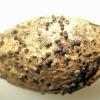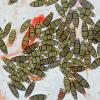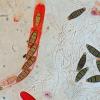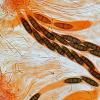
12-01-2026 22:02
Ethan CrensonHello all, I am hoping someone will have some ins

11-01-2026 20:35
Hello.A very tiny pyrenomycete sprouting sparsely

13-01-2026 18:55
Rees CronceStrossmayeria sp. on indet. decroticate hardwoodTh

13-01-2026 07:57
 Danny Newman
Danny Newman
cf. Bombardia on indet. decorticate woodAppalachia

13-01-2026 10:13
 Danny Newman
Danny Newman
Cordieritidaceae sp. on indet. wood w/ Hypoxylon s

13-01-2026 07:28
 Danny Newman
Danny Newman
Chlorociboria glauca on indet. decorticate logThe

13-01-2026 07:14
 Danny Newman
Danny Newman
Neodasyscypha cerina on indet decorticate logThe S

13-01-2026 09:10
 Danny Newman
Danny Newman
Dasyscyphella chrysotexta on indet. decorticate ha

13-01-2026 08:43
 Danny Newman
Danny Newman
Tricladium varicosporioides on indet. decorticate

13-01-2026 08:49
 Danny Newman
Danny Newman
Coccomyces sp. on fallen Rhododendron leavesPretty
 Hi forum,
Hi forum,I am posting this Dothideomycete on the behalf of Paul Leroy who recently found it on wild plum stones (Prunus cerasifera) in the vicinity of Tours (France).
Ascomata are subglobose 0.5–0.6 mm diam, half immersed with a stout neck. The neck is broadly rounded or slightly laterally flattened, typically with a slit-like or more rarely Y-shaped ostiole. The wall is black, pseudoparenchymatous, thick and leathery, much thinner and less pigmented in the immersed part.
Asci are bitunicate and fissitunicate, short-stipitate, cylindrical to fusiform, with uniseriate overlaping ascospores tending to become biseriate in the mid-part. Apex with a distinct refractive annulus, well seen by contrast in Congo red. Hamathecium of narrow trabeculate pseudoparaphyses. Ascospores 35–38 x 8–9 µm, fusiform slightly inequilateral, 5-euseptate, olivaceous brown at fresh state, end cells smaller and paler, wall verrucose, without sheath.
We considered Trematosphaeria and Lophiostoma in which it might have been placed according to old concepts of these genera but without success. Because of the well-developed ostiolar necks and cylindrical asci with a refractive apical annulus we also considered Navicella but in this genus ascospores are distoseptate and the hamathecium is different.
The unusual substrate and the distinctive morphology of this fungus may remind you something we missed.
Thanks for your suggestions.
Cheers,
Jacques & Paul
Salut Jacques,
Te voilà collé ! Ca rassure.
J'aurais conclu que c'est un asco du complexe Navicella, comme toi.
Je suppose que tu as cherché du côté de Fabre ?
Amuse toi bien !
Alain

There is Lophiostoma oreophilum Speg. in Berlese (Icone Fungorum vol. 1, p. 11, Tab. VII, Fig. 3) which possess such ascospores with 5-euseptate and end cells smaller and paler, 30-35 x 8-10 µm.
Christian

je n'avais pas pensé à consulter Berlese.
L. oreophilum est en effet une une piste mais il est lignicole et dans le protologue (Saccardo) il est dit que le substrat est coloré d'un vert qui rappelle Chorociboria. C'est quand même une piste.
J'ai parcouru Berlese et j'ai trouvé un joli Melanomma sur noyaux, M. nuclearium et sa variété majus, mais ils ne ressemblent pas au champignon de Paul.
Paul, fais un effort, trouve des champignons qui existent dans les livres!
Amitiés,
Jacques



